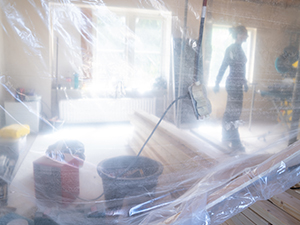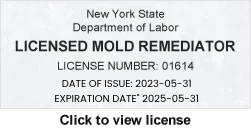
How to Protect Carpet During Renovation
There are many potential ways your carpet can get badly soiled or damaged during an interior renovation project. Contractors with steel-toed boots go in and out to retrieve supplies, tools, and equipment, remove demolished materials, and bring in new materials, which may include paint, adhesives, and chemicals. Although reputable contractors will protect the surfaces surrounding their work area, property owners should take extra precautions to avoid costly repair or replacement of carpeting. Here are some tips to safeguard your carpets during interior renovation projects.
Moving Furniture
Your renovation project may require moving furniture. Do not slide furniture across carpeting, because this can increase the odds of a snag, tear, friction damage, or other damage to your carpet. In many cases, you can move furniture with the help of a few able-bodied friends and the proper tools, such as furniture straps, stair rollers, moving blankets, a dolly, slides or ramps, and furniture glides. The easiest way to avoid injuring yourself or damaging your carpet, furniture, or other surfaces while moving very heavy or large furniture is to leave the job to professionals who are fully equipped to efficiently and effectively get your belongings from one room to another without incident. Just make sure your movers are properly licensed and insured.
Dust Containment
Airborne dust particles can create a health hazard, especially for people with respiratory issues. Dust particles can be abrasive, and if dust becomes embedded in carpeting, the particles can act like thousands of tiny shards of glass that tear and break carpet fibers every time someone takes a step. Hang plastic sheeting to contain dust within the work area and help maintain proper air quality throughout the rest of the home or building.
Carpet Coverings
The following protective products shield your carpeting against spills, construction dust, and soiling. Some products work better than others, depending on the design and quality of the product and what type of carpet and padding you are covering.
- Carpet film is the most convenient and best option to protect against spills and soiling on synthetic carpeting. Spills will not penetrate, provided there are no holes in the material caused by foot traffic. Carpet film is designed to be tough and does not tear or puncture easily. DO NOT use carpet film on wool or other natural fibers.
- Canvas painter’s drop cloths serve as a barrier between your carpet and soiling agents. They provide some protection against spills, but liquids can seep through if a large amount is spilled at once. Canvas will hold up well against foot traffic, because it doesn’t tear or puncture easily.
- Plastic painter’s drop cloths also protect against soiling and provide better protection than canvas against spills. It does not hold up as well to tears or punctures as canvas. Plastic painter’s drop cloths should be properly secured with tape to avoid trip and fall accidents.
- Protective floor coverings made with both absorbent fabric and plastic backing have all the combined benefits of canvas and plastic drop cloths.
- Thick flooring paper may be appropriate to use on thin carpeting with limited padding. Do not use tinted flooring paper, because if it gets wet, the color can bleed onto your carpeting. Paper should be properly secured with tape to avoid trip and fall accidents. Paper can offer protection against soiling and splatters, but significant spills can seep through.
Remove and Reinstall Carpeting?
For major renovation projects involving walls or ceilings near carpeted areas, you might consider having a professional carpet installer remove your carpet and then reinstall it once the project is complete. Although this approach might seem extreme, there may be certain projects where this extra precautious approach to carpet protection might be worthwhile.
After Renovation
Thoroughly vacuuming carpets each time floor coverings are replaced and after the project is complete is highly recommended. However, even the most thorough vacuuming may not be enough to remove particles that have become lodged in the fibers and backing of your carpet, as well as residual odors left behind by chemicals and other construction products. Your best bet to protect against premature wear following a renovation project is to have your carpets professionally cleaned. Professional cleaning flushes out deeply embedded contaminants, leaving your carpets fresh, clean, and inviting.
Follow these tips to protect your carpets during interior renovation. You’ll worry less, possibly avoid costly repair or replacement, and increase the likelihood that you’ll get the full lifespan out of your carpeting.
This article is one of a series of articles written and published on behalf of Surface Care PRO Partners.




